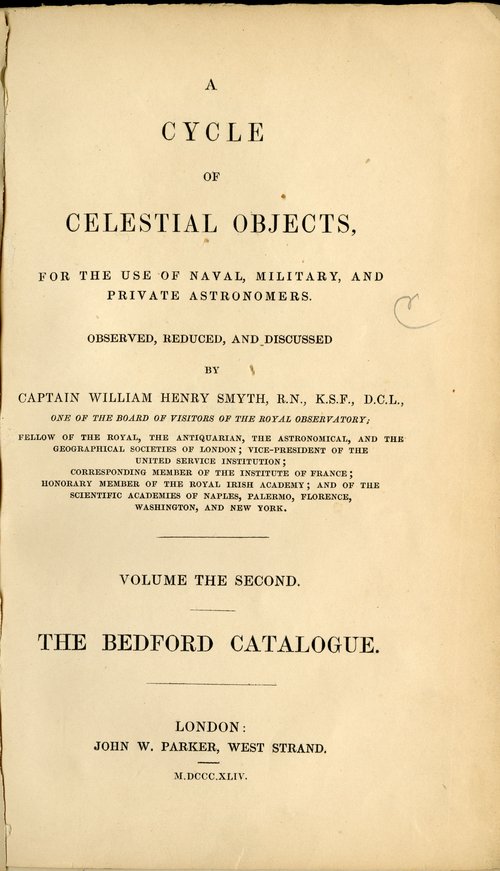Exhibits

When Captain William Henry Smyth retired from the British Navy, he built a private observatory. In 1844, he published A Cycle of Celestial Objects for the Use of Naval, Military, and Private Astronomers. While the first volume consisted of information on general astronomy, the second volume contained a catalog of 1,604 described stars and nebulae that became a standard reference work in the field for many years. Smyth’s descriptions were not just mere data, as they often included details of astronomical, mythological, and historical information. The book won the 1845 Gold Medal of the Royal Astronomical Society and the author later served as president of the organization.
A Presbyterian minister in Scotland, Thomas Dick enthusiastically promoted the harmony that existed between science and Christianity during the Victorian era. His published works influenced many politicians, writers, thinkers, and scientists. On display is the 1846 American edition of the reverend’s Celestial Scenery; or, The Wonders of the Planetary System Displayed; Illustrating the Perfections of Deity and a Plurality of Worlds originally published in London in 1837. As a youth, Thomas Dick had acquired a set of spectacles, ground down the lens, mounted them in a pasteboard tube, and began making astronomical observations that would continue throughout his life.
